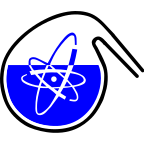Speaker
Description
After 30 years of accident on the Chernobyl NPP radioactive contamination in 30-km Chernobyl zone is determined by long-lived radionuclides of Cs-137, Sr-90 (with the half-life time 30.1 and 29.1 years, respectively) and alpha-emitting isotopes of Pu-238,239,240 and Am-241, also known as transuranium elements (TUE) (Sokolik 2004; Kashparov et al. 2003).
The overall aim of this article is to determine the volume activity of long-lived radionuclides in the surface air by experimental simulation of forest fire and estimate the potential health threat through calculation of effective doses for firefighters.
Materials and methods. Experimental simulation of forest fire, radiochemical analysis, spectrometry measurements, statistical analysis.
Results and conclusions. The data on airborne activity concentration was obtained by experimental simulation of forest fire in the smoke chamber. The common trend is the increasing of airborne activity of radionuclides with increasing of its activity concentration in combustible materials. Concentration of TUE in smoke aerosols was three order of magnitude lower than for cesium. Activity of Am-241 in aerosols was 1.5-2 times higher than activity of total plutonium. Pu and Am released in small amounts from the source of fire and can be transported only by ash and water particles because of high values of boiling points in comparison with cesium
During forest fire suppression in radioactively contaminated zones firefighters are at risk of additional exposure. The total effective dose can be presented as summary of external and internal irradiation. Dose of external exposure for adults is formed by contaminated forest site: from radioactive soil and vegetation. Due to forest fires, radioactive smoke plume can be an additional source of irradiation.
Calculated data shows that contribution of TUE to the total effective dose can reach 75 %. At the same time, the duration of inhalation intake is lower than the duration of personel staying in contaminated area. Thus, in the longer term, external irradiation from radioactive soil and vegetation will give a more significant contribution to the total dose. The risk of exceeding of annual effective dose limits is low during small fires, such data are of great importance to inform the population and reducing of social and psychological stress in the society, caused by the influence of mass media.

